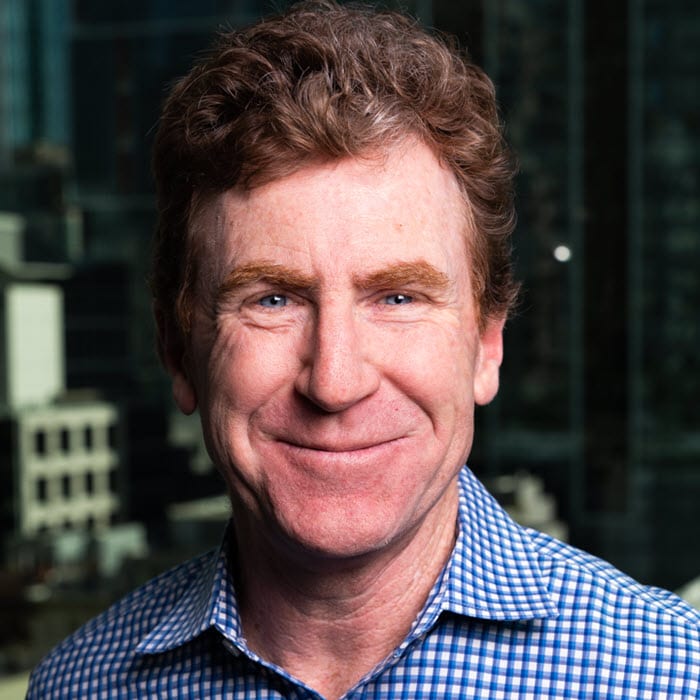Executive power shift: Embracing elevated consumerism in health care has been saved

Perspectives
Executive power shift: Embracing elevated consumerism in health care
Consumers are promoting themselves to be the new health care CEOs
Artificial intelligence. Virtual health. Retail health. New technologies and innovative approaches to care are transforming the health care industry. And it’s all leading to more decision-making power in the hands of the consumer, shifting traditional patient–provider dynamics. Our report reveals the cycles driving this change and how organizations can take action to thrive in a more patient-oriented Future of Health™.
From exam room to boardroom, it’s the dawn of a new health CEO
In the post-pandemic era, consumers now anticipate something different—and better—in how they navigate, choose, manage, and experience their health and well-being. As such, consumers are becoming the CEOs of their own health journeys.
More than half of surveyed consumers would be very or extremely likely to tell their doctor when they disagree with them,1 and 63% would even be willing to switch doctors if they do not like the way their doctor communicates.2 The implication for organizations in the health care industry is profound: They will be reporting up to the consumer, meaning a reorientation of their model is required.
The imbalance of knowledge and decision-making power will no longer prevent consumers with agency to act on their preferences. In a world of Generative Artificial Intelligence (GenAI), consumers have knowledgeable copilots helping them make decisions. According to our 2023 Health care consumer survey, 53% believe GenAI could improve access to health care, and 46% said it had the potential to make health care more affordable.3
In the Future of Health,4 clinicians will evolve from being the central figures in health care decisions to adopting roles akin to coaches. This transformation allows clinician providers to be more patient-focused and spend more time addressing patient concerns and less on administrative tasks. We believe this period of change will be defined by three “consumer cycles,” giving rise to the Future of Health consumer. In our report, we examine the drivers behind the industry reassembly, dive deeper into the consumer cycles, and explore how organizations can position themselves for success amid this shift.
Read an alternative perspective to the consumer-centric view presented here. Authored in collaboration with two industry-leading physicians, this analysis explores how key health care trends are reshaping the doctor-patient relationship.
What’s driving reassembly around the consumer?
The evolving landscape of health care is being driven and shaped by three pivotal elements: shifting ownership of decisions, Generative AI, and possession of health data. Each of these factors plays a crucial role in reconfiguring the industry to better meet the expectations of today’s consumers—and to help address trust in the health care ecosystem. As we move forward, it’s imperative that these aspects are addressed holistically to help ensure the successful evolution of health care to meet the diverse needs of all consumers.
Shifting decision ownership
Consumers are examining and questioning the value of the health services they consume.
The increased health care costs, combined with a significant gap of insurance and health literacy, places pressure on consumer trust in the health care ecosystem. Behind the out-of-pocket spend lies a continued evolution of what consumers experience as “shoppable” decisions.
Generative AI
GenAI is forcing industry reassembly around the consumer—and, frankly, by the consumer.
GenAI is forcing industry reassembly around the consumer—and, frankly, by the consumer. Unlike traditional AI, GenAI can create novel output that appears to be generated by humans,5 and some consumers are using GenAI to ramp up their health knowledge rapidly and pursue care options. The technology isn’t just an incremental improvement but a significant departure from previous AI models.
Data access and possession
The expansion of access to and the utilization of data are profoundly reshaping the Future of Health.
This democratization of health data is empowering consumers, enabling them to make more informed decisions about their health and wellness, which can lead to improved health outcomes and enhanced patient experiences.
Unfolding and balancing the industry’s power differential
While the path toward a consumer-centric, holistic health experience by 2030 is already taking shape, it is not necessarily linear. Consumers will likely move from being nascent self-navigators who drive more “shoppable moments” to evolved health advocates who demand personalized care in a gradual progression. The consumer evolution will be matched by a recasting of industry players that change in size, nature, and focus over time. Rather than a sudden seismic shift, this evolution will occur over the course of three distinct consumer cycles.
The first cycle of disruption in the health care industry, characterized by less intrusive and consumer-centric changes, is underway. This cycle, marked by industry fragmentation, is expected to grow over the next three years and will be driven by new entrants from the retail and consumer sectors.
One of the key aspects of this cycle is the emergence of “DIY” health-conscious consumers. According to the biennial Deloitte Survey of US Health Care Consumers, 32% of respondents chose virtual visits because they’re more convenient.6
This demographic is making informed choices about their wellness, driving the proliferation of personalized wellness products and experiences. The growing popularity of wearables and digital health services is a testament to this trend, reflecting daily engagement and a heightened focus on personal health monitoring and management.
Transparency in health care is another critical component of this cycle. There’s an increasing demand for price transparency, driven by consumer knowledge and policy changes. This transparency is essential for empowering consumers, allowing them to make more informed decisions. Moreover, advancements in technologies like GenAI are revolutionizing the way health plan benefits are understood and utilized. By bridging gaps in health and health insurance literacy, these technologies simplify complex decisions and facilitate self-service, enhancing consumer empowerment.
The accessibility of health care has improved with the proliferation of convenient care sites like retail clinics, virtual platforms, and home health services, exemplified by One Medical’s hybrid model and tools like ZocDoc, which ease health care navigation.
Over the next three to six years, we expect to experience a shift to the second stage. This cycle is characterized by the emergence of the fully enabled health consumer, a pivotal force disrupting the landscape of general care.
Our data shows 20% of surveyed consumers already use social media for information on public health issues (while only 50% go to their doctor), and 21% get information from their health plans.7 Armed with personal health records and an expanding array of health knowledge, these consumers aren’t only more informed but also increasingly demanding in their expectations from health care providers.
This evolution is fueled by easier access to information and the demand for convenience seen in other industries, compelling consumers to seek more personalized health plans and engage more deeply in their own health management. The traditional general care model faces disruption from these informed consumers, technological advancements such as digital therapeutics and GenAI, and the growing popularity of on-demand and subscription-based models. These innovations have the potential to reduce administrative burdens on clinician providers, potentially enabling them to offer more personalized, one-on-one care.
A significant trend is the segmentation of care offerings, which are increasingly being offered “a la carte” on health plans. This unbundling approach, a departure from the traditional one-size-fits-all model, allows for more customized and specific health care solutions. Companies like Maven Clinic demonstrate this trend, providing tailored offerings built around specific segments. Consequently, health plans are diversifying, offering a broader range of choices, but also introducing lower-cost, higher-risk options for catastrophic care, reflecting a new balance between cost and risk in consumer choices.
Trust plays a vital role in this new era, with consumers placing increased faith in digital solutions while reassessing their trust in traditional health care and human clinician providers. This distinction marks a fundamental change in the perception and utilization of health care. Cycle 2 represents not just a change in services and models but also a fundamental shift in the very ethos of health care provision and consumption.
By the year 2030, the health care industry will likely be transformed by cycle 3, a new era of health centered around the consumer. This era is marked by an unprecedented fusion of technology, biology, and personalized care. The core of this transformation is the shift toward far greater individualized care, or “N of 1” health modularization, wherein treatments and health strategies feel uniquely tailored to each person’s needs, utilizing data-driven insights to power individuals’ health journeys. This approach contrasts with the traditional one-size-fits-all model, ensuring that the same health condition can vary significantly between individuals.
This personalized health care will likely be seamlessly integrated into daily life, facilitated by advancements in wearables and digital health technologies. It promotes health consciousness without demanding significant behavioral changes. Another crucial aspect of cycle 3 is the reduction of intermediaries, bringing consumers closer to their care and giving them more control over their health decisions. We’re already seeing early signs of this shift with organizations such as Blue Shield of California’s decision to reduce the degree of benefits control it had previously granted to CVS Caremark.8
Cost reduction is another considerable benefit of cycle 3, with a focus on integrating equity in health care. Strategies such as subsidized care based on clinical and social determinants of health; new payment models like cash pay, sliding scales, and health stipends; and “N of 1” value-based care are set to emerge. These approaches aim to dismantle the wealthy-healthy dilemma, ensuring that quality health care is accessible to all, regardless of socioeconomic status.
This cycle of evolution isn’t solely about changing how health care is delivered; it’s about reimagining what health care can be. It’s a vision of a world where everyone, irrespective of background, has the tools, knowledge, and support to lead a healthier, happier life. Cycle 3 isn’t just a change in health care—it’s a change in how we live.
Actionable strategies for health care ecosystem businesses
To ensure the consumer is at the center of this transformation, organizations must critically evaluate their messaging and outreach strategies. Are they effectively tailored to reach and engage consumers? Are businesses maximizing consumer-facing channels? In this rapidly changing landscape, four areas demand attention:
- Building partnerships and leveraging data. In an ecosystem in which collaboration is essential, forging robust partnerships will likely be key to unlocking new potentials.9
- Redefining product offerings. Health organizations likely need to move beyond traditional services and products to meet the dynamic needs of today’s consumers.
- Changing engagement models. In today’s digital age, engagement must extend beyond the clinic or hospital.
- Revamping go-to-market strategies. To effectively reach and influence today’s consumers, health organizations should rethink how they market their services.
Download the complete report for a deeper dive into the actionable strategies.
The Future of Health ushers in a newly empowered health executive
This vision for the Future of Health, though bold, aligns with the inevitable forces of change shaping our industry. The biggest challenge for health organizations will likely be adapting to the shifting consumer expectations and the growing empowerment of patients. Patients are no longer passive recipients of health care; they are becoming the executives of their health decisions, demanding products and services that are essential to their comprehensive health journey.
The time is ripe for a paradigm shift in health care. Working together, health care organizations and consumers can shape a world not only where health care is equitable and centered on the consumer but also where consumers are actively leading their health narrative. It’s not just an opportunity; it’s an imperative. The Future of Health isn’t just about making knowledge accessible to consumers—it’s about empowering consumers to become active participants in their health journeys.
Watch our 4-part video series about the dawn of a new health CEO.
Endnotes
1Asif Dhar et al., “Inflation signals unrest ahead for health care,” Deloitte Insights, November 1, 2022.
2Ibid.
3Asif Dhar, Bill Fera, and Leslie Korenda, “Can GenAI help make health care affordable? Consumers think so,” Deloitte Health Forward Blog, November 16, 2023.
4Deloitte, The Future of Health™, accessed November 29, 2023.
5Michael Steinhart, Susanne Hupfer, and Jagadish Upadhyaya, “Health holidays: Wearables and health data may tip the scales toward better nutrition,” Deloitte Insights, December 8, 2022.
6Fera et al., “Tapping virtual health’s full potential.”
7Ibid.
8Rebecca Pifer, “Blue Shield of California is promising a simpler, cheaper pharmacy benefits model. Can it deliver?,” Healthcare Dive, updated October 26, 2023.
9Simon Gisby et al., “New business models in health care: Building platform-enabled ecosystems,” Deloitte Insights, February 24, 2022.
Recommendations
Adapting for the inevitable: the Great Reassembly
Gain clarity into health care’s radically evolving ecosystem
Navigating the emergence of Generative AI in health care
Catalyze trust in the broader Future of Health™ transformation






